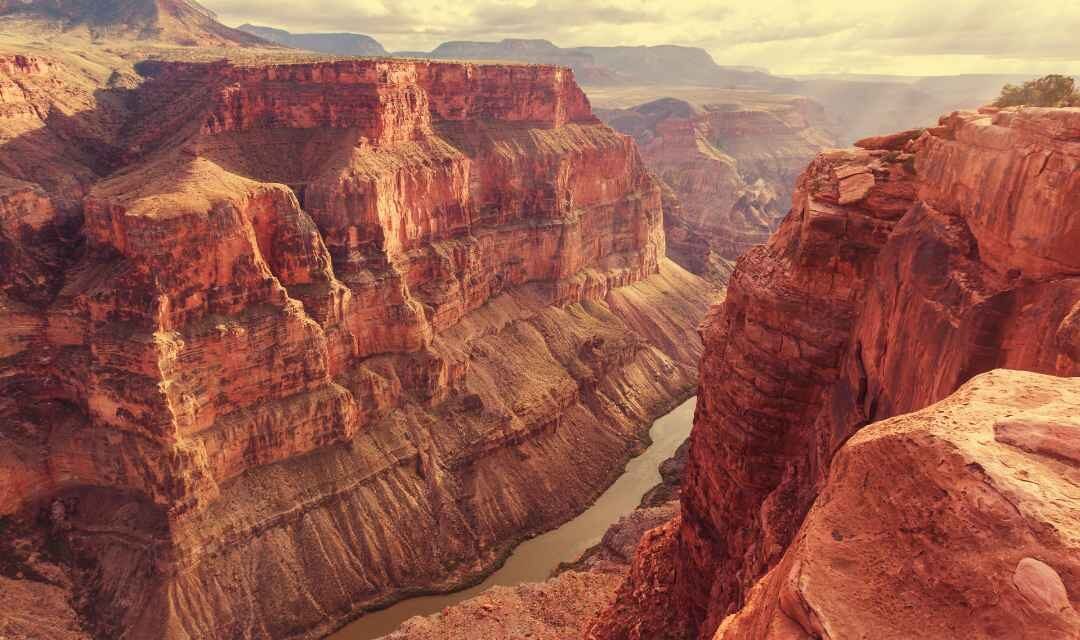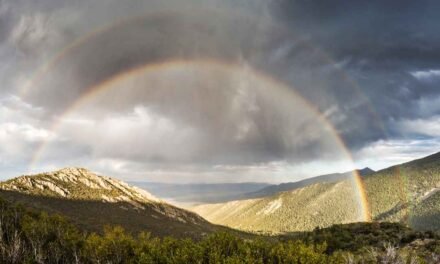Overview
Grand Canyon National Park, one of the most famous and awe-inspiring national parks in the United States, is home to the iconic Grand Canyon. This immense gorge, carved by the Colorado River over millions of years, attracts millions of visitors each year who come to marvel at its breathtaking beauty, rich history, and incredible geology. With numerous outdoor activities, educational opportunities, and stunning vistas, Grand Canyon National Park is a must-visit destination for nature enthusiasts and adventure seekers alike.
Grand Canyon National Park Location
Grand Canyon National Park is located in the northwestern region of Arizona, close to the borders of Utah and Nevada. The park encompasses over 1.2 million acres and is divided into two main areas: the North Rim and the South Rim. The South Rim, which is open year-round, is the most popular and accessible area of the park, while the North Rim is more remote and offers a quieter, less-crowded experience.
Grand Canyon National Park Things to Do
From hiking and river rafting to stargazing and wildlife watching, there are countless activities to enjoy at Grand Canyon National Park.
Hiking
- Rim Trails: Both the North and South Rims offer well-maintained, mostly level trails that provide stunning views of the canyon. The South Rim’s Rim Trail and the North Rim’s Bright Angel Point Trail are popular choices for visitors.
- Inner Canyon Hikes: For those seeking a more challenging experience, several trails descend into the canyon, including the famous South Kaibab and Bright Angel Trails. These hikes can be strenuous and require proper planning and preparation.
River Rafting
Experience the thrill of navigating the Colorado River through the heart of the Grand Canyon. Commercial river trips, ranging from a few days to three weeks, are available from licensed outfitters. Alternatively, experienced rafters can apply for a permit to organize a private trip.
Mule Rides
One of the most unique and traditional ways to explore the Grand Canyon is on the back of a mule. Both the North and South Rims offer guided mule trips, but advanced reservations are highly recommended.
Scenic Drives
For those who prefer to take in the stunning views from the comfort of their vehicle, there are numerous scenic drives available along both rims of the park. Popular routes include Hermit Road and Desert View Drive on the South Rim and Cape Royal Road on the North Rim.
Stargazing
With its clear skies and minimal light pollution, Grand Canyon National Park is an excellent destination for stargazing. The park hosts an annual Star Party in June, offering ranger-led astronomy programs and telescope viewing.
Grand Canyon National Park Itineraries
Whether you have a single day or an entire week to explore the park, there are several suggested itineraries to help you make the most of your visit.
One Day
Focus on exploring the South Rim, as it offers the most accessible and diverse viewpoints. Start at the Grand Canyon Visitor Center, where you can watch the park’s orientation film and plan your day. Walk or take the free shuttle along the Rim Trail, stopping at popular overlooks like Mather Point, Yavapai Point, and Grandview Point. If time permits, consider hiking a short distance down the South Kaibab or Bright Angel Trails to experience the inner canyon.
Two to Three Days
With more time, you can explore additional areas of the South Rim and venture into the inner canyon. Consider hiking down to Plateau Point or Indian Garden via the Bright Angel Trail for an overnight stay at the park’s backcountry campgrounds (permit required). Additionally, you can drive along Desert View Drive, stopping at various viewpoints and the historic Desert View Watchtower.
Four to Seven Days
If you have a week to explore, consider visiting both the South and North Rims. Spend a few days at the South Rim, hiking and taking scenic drives, before making the approximately 4.5-hour drive to the more remote North Rim. Here, you can enjoy the tranquility and unique perspectives of the canyon, hike the North Kaibab Trail, and take in the views from Cape Royal and Point Imperial.
Best Season to Visit Grand Canyon National Park
The best time to visit the Grand Canyon depends on your preferences and interests. While the park is open year-round, each season offers its own unique experience.
- Spring (March to May): Mild temperatures and blooming wildflowers make spring an ideal time for hiking and sightseeing. However, the North Rim remains closed until mid-May due to snow.
- Summer (June to August): Summer is the busiest season at the park, with hot temperatures and increased visitation. While the South Rim can be crowded, the North Rim offers a cooler and less congested alternative.
- Fall (September to November): Fall offers cooler temperatures, vibrant foliage, and fewer crowds, making it a popular choice for many visitors. The North Rim remains open until late October, weather permitting.
- Winter (December to February): Winter at the Grand Canyon is characterized by snow, cold temperatures, and limited services. While the South Rim is open year-round, the North Rim is closed for the season. Winter offers a unique and serene experience, with fewer visitors and stunning snow-covered landscapes.
Grand Canyon National Park Weather
Weather at the Grand Canyon can be unpredictable, and it’s essential to come prepared for a variety of conditions. While the South Rim’s higher elevation leads to cooler temperatures, the inner canyon can be significantly hotter, especially during the summer months. It is important to check the weather forecast and plan accordingly for your visit.
Grand Canyon National Park Hotels and Camping
There are numerous lodging and camping options within and around the park, catering to a variety of tastes and budgets.
Hotels
- South Rim: The South Rim offers several historic lodges, including El Tovar Hotel, Bright Angel Lodge, and Kachina Lodge. Reservations are highly recommended, especially during peak season.
- North Rim: The Grand Canyon Lodge is the only lodging option within the North Rim, offering both cabins and motel rooms. Advance reservations are necessary, as the lodge operates seasonally from mid-May to late October.
- Outside the Park: The towns of Tusayan, Williams, and Flagstaff, located near the South Rim, offer a range of hotels, motels, and bed and breakfasts. The North Rim’s closest lodging options can be found in the nearby towns of Jacob Lake and Kanab.
Camping
- South Rim: The park has two developed campgrounds: Mather Campground and Trailer Village RV Park. Reservations are recommended, especially during peak season. Additionally, the nearby Kaibab National Forest offers dispersed camping options.
- North Rim: The North Rim Campground offers both tent and RV sites, operating seasonally from mid-May to late October. Reservations are highly recommended.
- Backcountry Camping: For those seeking a more remote experience, backcountry camping permits are available for various locations within the park, including the popular Bright Angel and Indian Garden campgrounds.
Grand Canyon National Park Restaurants
The park offers a range of dining options, from casual cafes and snack bars to more formal dining experiences.
- South Rim: El Tovar Dining Room offers fine dining with a view, while the Arizona Room and Bright Angel Lodge provide more casual fare. Other options include the Maswik Food Court, Yavapai Lodge Restaurant, and various snack bars and cafes.
- North Rim: The Grand Canyon Lodge Dining Room offers both casual and more formal dining options, while the Deli in the Pines provides quick bites and snacks.
- Outside the Park: The towns near the South Rim, such as Tusayan, Williams, and Flagstaff, offer a variety of restaurants and cafes, while dining options near the North Rim can be found in Jacob Lake and Kanab.
Grand Canyon National Park Wildlife and Plants
The park’s diverse ecosystems support a wide range of plant and animal species. Some of the most commonly spotted wildlife includes elk, mule deer, bighorn sheep, coyotes, and a variety of bird species, such as the endangered California condor. The park is also home to unique plants, including the ancient bristlecone pine and vibrant wildflowers.
Grand Canyon National Park History
The Grand Canyon’s human history dates back thousands of years, with evidence of Native American inhabitants as far back as 12,000 years ago. The region was home to several native tribes, including the Ancestral Puebloans, Cohonina, and the more recent Havasupai, Hualapai, and Navajo tribes. The first Europeans to explore the area were Spanish conquistadors led by García López de Cárdenas in 1540. The canyon was later explored by various American expeditions, most notably the John Wesley Powell expedition in 1869.
The establishment of the park was a long process, beginning with its designation as a Forest Reserve in 1893. It later became a National Monument in 1908, before finally gaining National Park status in 1919. Since then, the park has seen various infrastructure improvements, including the construction of visitor centers, lodges, and trail systems.
Grand Canyon National Park Geology
The Grand Canyon’s stunning geology is the result of millions of years of geological processes, primarily the erosive power of the Colorado River. The park contains a vast array of rock formations, including ancient metamorphic rocks, colorful sedimentary layers, and more recent volcanic deposits. These layers provide a valuable record of history, with some of the oldest rocks dating back nearly 2 billion years.
As the Colorado River carved its way through the landscape, it exposed various rock layers, creating the dramatic cliffs and plateaus that define the canyon’s appearance. The process of erosion and deposition is ongoing, with the river continuing to shape the canyon even today.
Conclusion
Grand Canyon National Park is a truly remarkable destination, offering visitors an unparalleled opportunity to explore one of the world’s most iconic natural wonders. With its rich history, diverse wildlife, and countless recreational activities, the park is a must-see for any nature enthusiast or outdoor adventurer. Whether you’re visiting for a day or an entire week, this comprehensive visitor’s guide will help you make the most of your Grand Canyon experience.





